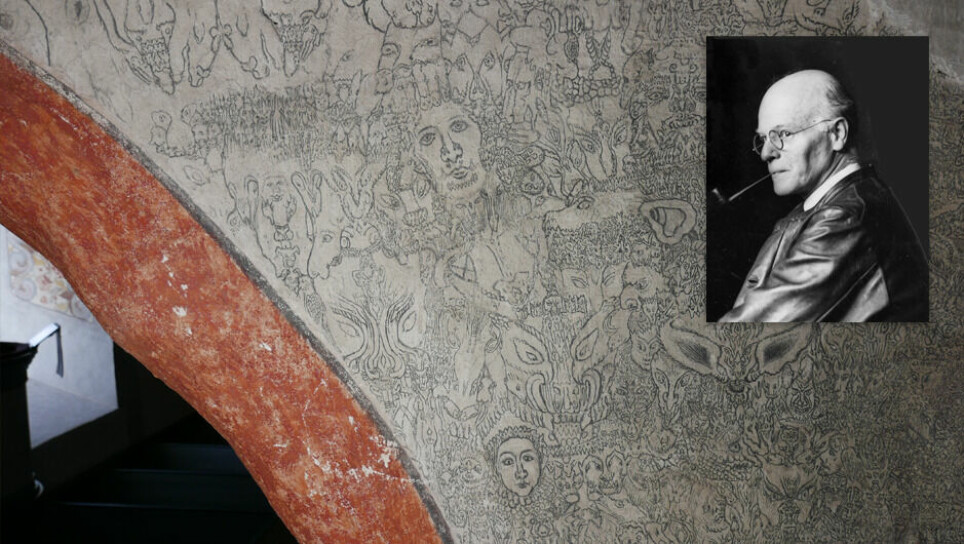
This demon wall was supposed to be from the Middle Ages. But it’s only 80 years old — and a fake.
What makes a conservator paint a wall and say it dates from the Middle Ages? And how did this happen?
From a distance, it looks like a very dirty wall.
But as you get closer, you see thousands of faces, up close. Demons and other beings.
The demon wall in Sauherad church, located in the southern Norwegian county of Telemark, has been a mystery for 80 years. In 1941, curator Gerhard Gotaas had begun work uncovering it. His findings provoked great interest.
The art on the wall is completely unlike anything from any era. There was something truly inexplicable about it.
Inexplicable, that is, until this year. Elisabeth Andersen and Susanne Kaun from NIKU – the Norwegian Institute for Cultural Heritage Research — have revealed that it’s a deception.
A deliberate deception? That's another question.
The findings were presented in an article in the Norwegian art history journal Kunst og kultur in October.
Gerhard Gotaas was not an avid restorer of frescoes in 1941. He had done one piece of work in Nes church, which is also located in the town of Sauherad, in the latter half of the 1930s. Then, the doors were open to the public.
Sauherad church was different. Gotaas locked the door.
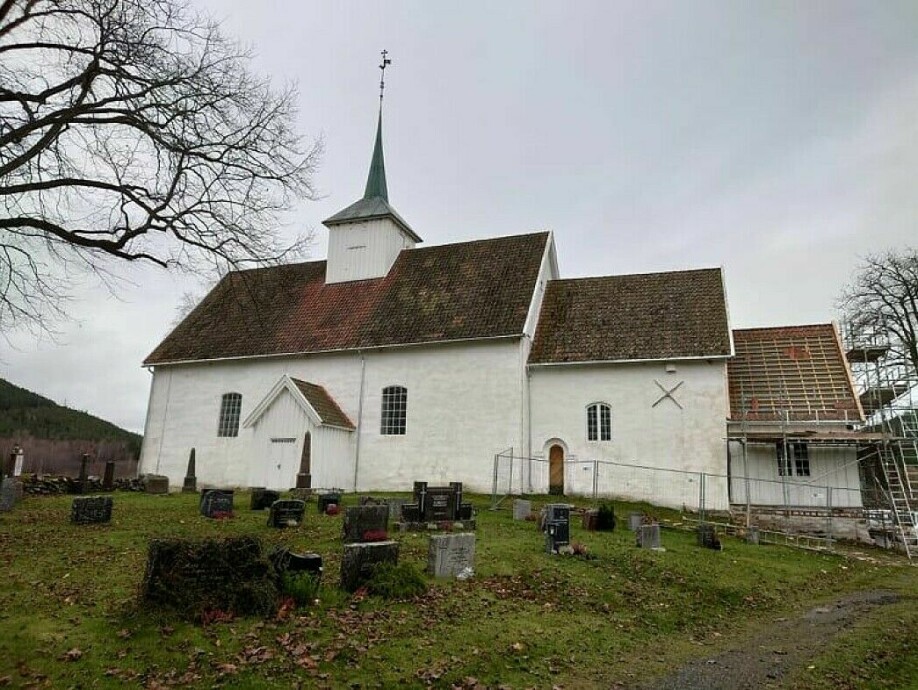
No traces of brushstrokes
The demon wall is extremely detailed. It must have been a time-consuming, fiddly job.
Gerhard Gotaas claimed that he had painted the wall based on old marks on the wall. There were reportedly traces of old brushstrokes.
But Andersen and Kaun examined the wall carefully. There’s no evidence of earlier work that match the lines in the decoration.
There were some fragments from before. Gotaas himself photographed and documented this. One photograph was supposed to be an important piece of evidence, Susanne Kaun said to sciencenorway.no.
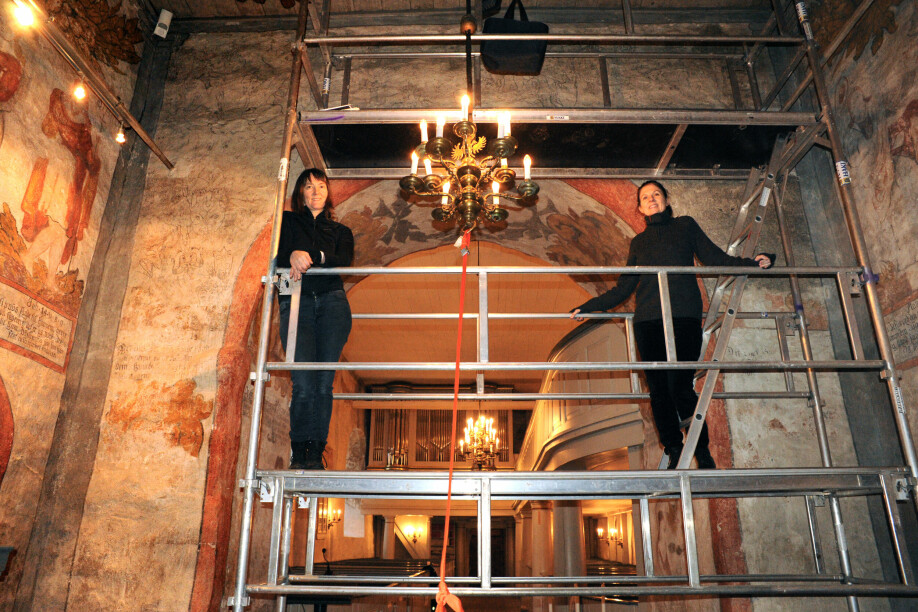
Hard to grasp
Kaun said she found it almost incomprehensible that this kind of forgery was possible to such an extent.
“For me, it is still incomprehensible that a conservator could do something like this,” she said.
The big eye opener for the two researchers was a photograph of a male figure with a beard, which Gotaas himself took. He did not send this picture to the Norwegian Directorate for Cultural Heritage.
When you see this photo in connection with the result of Gotaas's restoration, it becomes clear that he has made major changes.
“It had nothing to do with the original. I became completely speechless and still can’t comprehend it,” says Kaun.
The figure was christened "Beelzebub" by Gotaas and national antiquarian Harry Fett. This is another name for Satan. But the male figure probably has nothing to do with Satan at all.
Perhaps the figure was originally part of a drawing of prophets from the 15th or 17th century, the researchers write in the article. It could be reminiscent of the figure Aron on the altarpiece in Seljord church, also in Telemark.
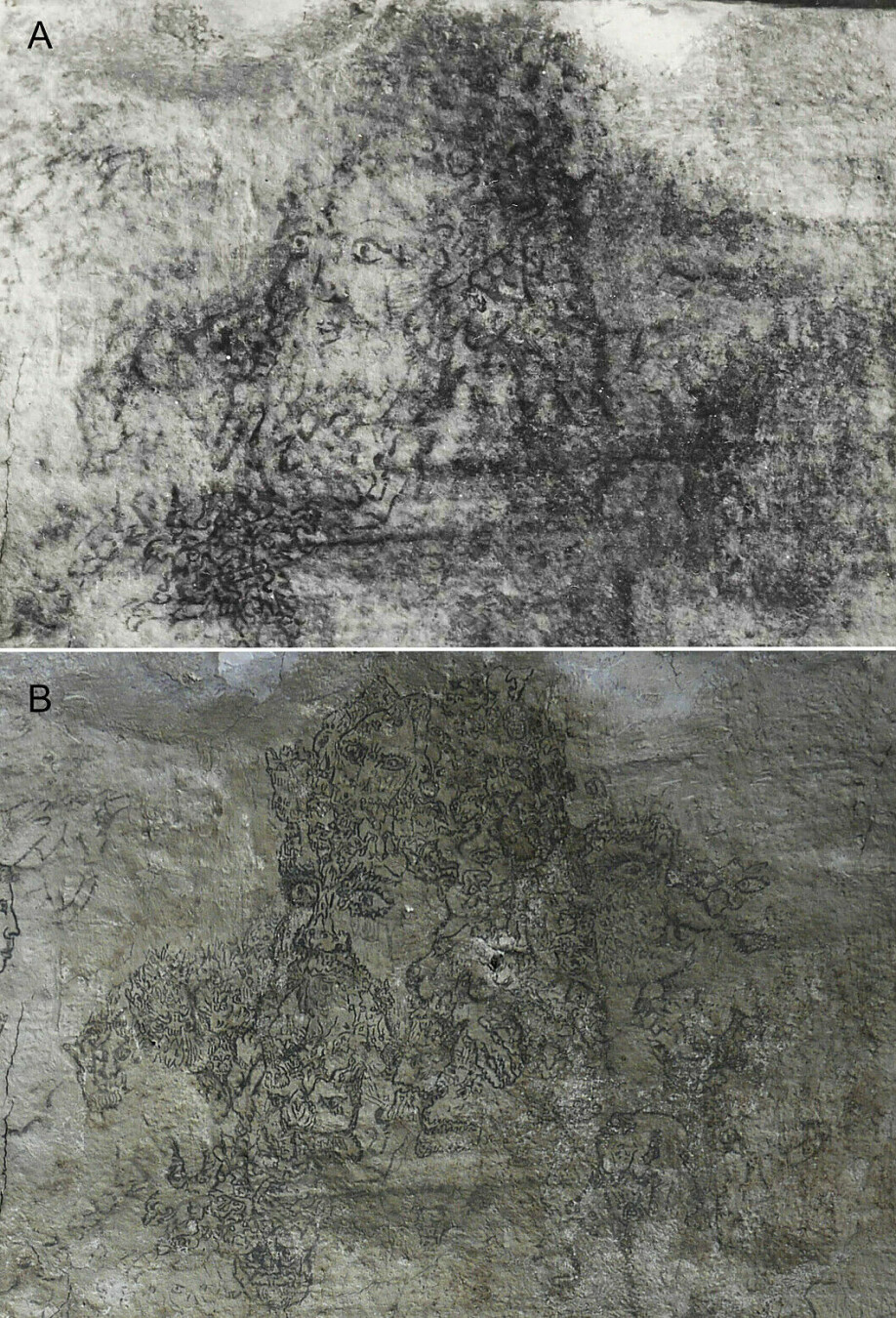
Puzzle piece fell into place
Linn Kristin Solheim works as a paintings conservator at the Museum of Cultural History, University of Oslo (UiO). She herself has been fascinated by the demon wall for several years.
She shared her reaction with sciencenorway.no when she heard about what Andersen and Kaun had uncovered.
“I never thought it was fake, but I thought it was completely strange. It was as if a piece of a puzzle fell into place,” she said.

Who was Gotaas?
Andersen and Kaun write about the culture of conservators during this period in their article. It was not uncommon to simply restore a missing decorative part.
But Gotaas often went further than his colleagues, the researchers write. The distinction between old and new was not always clear.
Gotaas was not just an art conservator. Before that he studied to be an artist.
In addition to his job as a conservator, he painted his own pictures. He also participated in some small art exhibitions, but never became well known as an artist.
Kaun says that they have not managed to find any visual art painted by Gotaas. But they have been told that most of his work was with traditional landscape paintings.

Sacrificed art from the 18th century
It was not until 1935 that Gotaas began to restore frescoes. In 1938, he completed the restoration of frescoes in Nes church, which is located in the same municipality as the church with the demon wall.
In 1939 he began his investigations in Sauherad. He found traces of decorations from the 18th century, but was not that interested in them. Gotaas was more interested in finding decorations from the Middle Ages.
So he 'sacrificed' some of the decorations from the 18th century. He believed that there was something under the 18th century layer that was so fantastic that he would be forgiven for his choice.
The 18th century decorations would have had a value as a historical layer, Solheim says. Nevertheless, the method Gotaas chose is not completely unheard of.
“In that sense, he caused serious harm by removing this layer. But it was something they did. Removing layers to get down to what was underneath was something that they did at the time,” she said.
RELATED:
Did you want to read about stuff that was actually from the Middle Ages? If so, we might tempt you with these stories
- Thousands of medieval trinkets discovered underneath Scandinavian churches
- How dirty and stinky were medieval cities?
- Was rape common in the Middle Ages?
Why was the work not verified?
To an outsider, it is almost unbelievable that Gotaas' work was not verified to a greater extent.
Andersen and Kaun have searched archives and asked people who worked at the Norwegian Directorate for Cultural Heritage several decades ago. Some said they knew the wall was fake. The researchers heard rumours that said the same thing.
“But people wanted to protect him, both because there were not so many conservators working in churches at this time, and because the discipline was still in its infancy. There was no formal education. There was no one who could verify his work then and there,” Kaun said.
“The second aspect is that it was embarrassing for the Directorate for Cultural Heritage as well. They wanted to put a lid on it, so there was no more talk about it,” she said.
Solheim says that it was natural to have confidence in the professional they chose to do the job.
“They trusted the professional and his expertise,” she said.
The demon wall is also high and inaccessible. Andersen and Kaun had to use scaffolding for their work.
More work was done in the church after Gotaas finished with the demon wall. The church archives however don’t mention the demon wall anywhere, Kaun said. There are many indications that the demon wall became the elephant in the (church) room.
Watch this video from Sauherad church:
The film 'Devilry and the Creator's Joy' was made by Thomas Nikolai Olsen.
Gotaas must be seen in the light of his time
“It’s very surprising that he did what he did. It's like a full on tall tale, except it's true,” Kaja Kollandsrud said to forskning.no.
Kollandsrud is an associate professor and painting conservator at the Museum of Cultural History, University of Oslo and an expert on church art from the Middle Ages.
“It’s easy to look at this from where we are now and say ‘ha-ha’ about what they did, but it was a different time and they had a different understanding than we have now. You have to see Gotaas in the light of the times,” Kollandsrud said.
“This example illustrates how important it is that the person who undertakes a job like this has both the qualifications and their ethics in order. The conservation profession is young,” she said.
Kollandsrud says that the professionalisation of the occupation began in earnest in the 1950s. Before that, conservators had many secrets, she says.
“We stand on the knowledge of our predecessors and have learned from their mistakes, so we have to be careful about condemning them,” she said.
“But Gotaas has gone beyond any acceptable limit. His motive is difficult to understand. It seems once he got started, he wasn’t able to stop,” she said.
Had respect for the original
Gotaas was also not generally careless. He showed great respect for the original art elsewhere in his work.
For example, he was very hesitant to repaint an inscription from the 18th century in the same church, because he could not see it completely. In this instance, he asked the Directorate for Cultural Heritage for permission to repaint it.
Susanne Kaun is also doubtful that the forging of the demon wall was entirely deliberate.
She and Andersen write this in their article:
“We can only speculate as to what Gotaas was thinking when he worked on the demon wall. Did it unleash all his artistic and imaginative impulses when he saw the structures in the wall surface? Was he so eager to find something exciting that he lost sight of the principles that restorations should abide by? Or did something happen to his psyche? We do not know.”
RELATED More on various types of fraud:
- Research fraud is nothing new: Here's how scientists manipulated data in the 1800s
- Food fraud: Do you really know what fish species you are eating?
- Fighting fake science - one duplicated or fake image at a time
Could it have happened today?
Could a similar wall be completely repainted in 2021, based on a conservator's fantasy?
Kaun says absolutely not, a fake of that nature would have beeb discovered.
“If I had gone into a church and claimed to find something that was not there… no. Some would wonder what was going on, and there are a number of control mechanisms, both among colleagues and through the Directorate for Cultural Heritage,” she said.
Thorough reporting has also become a matter of course.
Gotaas did not write a report. Times have changed in the field of conservation.
“What we have of reports from that time is very limited. His reporting wasn’t any worse than any of his other colleagues,” Solheim said
“It was completely usual at that time that he didn’t write a report,” Kollandsrud said. “Correspondence was considered good enough.”
Nevertheless, there are major cultural differences when it comes to conservation. In Norway, for instance, there is no culture for exaggeration.
Add as little as possible
“We reduce visual damage. We retouch exactly where there is damage so that it becomes easier to see what is there. We reduce the damage rather than fixing an object to make it look exactly like when it was new,” Solheim said.
“It should be possible to distinguish our work from the original. As an intern in England, I met students from all over Europe. Some of them were trained to go much further in retouching than I was taught in Norway,” she said.
Gotaas went further in his work with the demon wall than anybody else would, Solheim said.
“He was no longer a conservator. He stopped adhering to professional norms, and started on his own project,” she said.
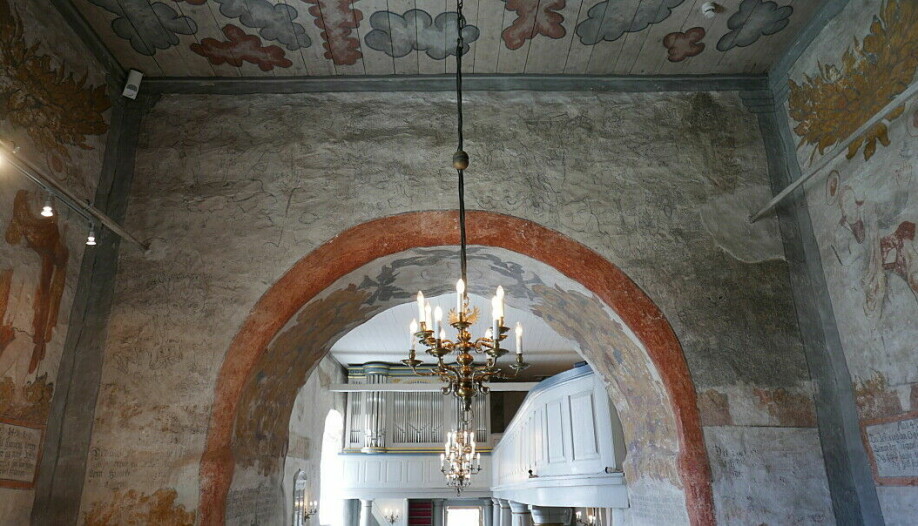
Our imagination makes us see faces
Often a restoration can go too far. You paint something beyond what you have a basis for, Kaun said.
Painting according to free imagination, however, is something quite different.
Gotaas must have gambled with his name and reputation. How did he dare?
There is no clear answer. At first Andersen and Kaun thought he might have seen something on the wall surface.
“The surface is very rough. You can see patterns and faces in the marbling if you want and if you have an imagination. But it is really imaginative to see all this here,” they said.
A turkey that shouldn’t have been there
Mural restoration it turns out, is rife with fraud. For example the German Lothar Malskat. He reported himself as an art forger in 1952.
Malskat had repainted St. Mary's Church in Lübeck, where 14th-century decorations had been damaged in a fire during World War II.
Among other things, he painted turkeys, which were not known from Lübeck in the 14th century. And Mary Magdalene suddenly went without shoes. At first no one believed him when he admitted the fraud, according to the American student university newspaper The Johns Hopkins News-Letter.
“It shows that there are examples of fraud in conservation and with murals. Still this demon wall is something that goes far beyond that,” Kaun said.
The scope is tremendous. And Gotaas had done honest work before.
“Somehow I think that Gotaas must have believed a little in himself as well. I don’t quite think he consciously did this. I don’t buy the explanation that he sat there and thought he should paint devils on the wall and fool everyone,” Kaun said.
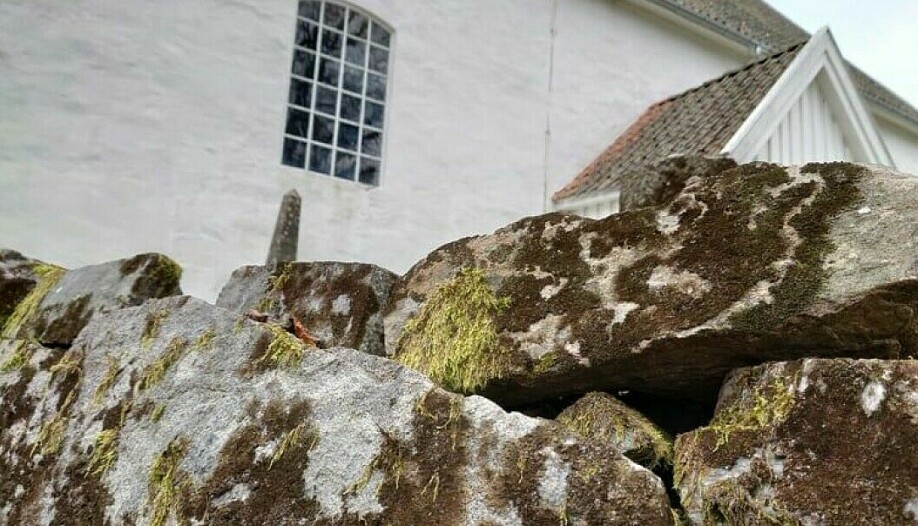
What now?
Now that it's come to light that the demon wall is no more than 80 years old: What future does it face? Is it worth preserving? Maybe today's techniques would allow conservators to remove Gotaas’s paintings and keep the old ones underneath?
“It can be done. If the paint Gotaas has used is water soluble, it might be possible to remove it without damaging what is underneath,” Kaun said.
But it’s not that easy to do. Kaun herself won’t suggest it, and she doubts whether the Directorate for Cultural Heritage would want to do it, either. There’s probably little left of the older artwork underneath, for one thing.
“Gotaas has now become part of professional history. It’s an ethical question whether we want to remove Gotaas and find something that is not so well-preserved underneath. The demon wall remains a fascinating work. The important thing is that we now know what we are looking at and who created it,” Kollandsrud said.
“It’s disappointing that there’s not an exciting story from long ago about what and who produced these wild demons,” said Solheim.
At the same time, the story that has emerged from Andersen and Kaun’s research is exciting in itself. It has a high wow factor, Solheim said.
“And it's still completely brilliant, that wall,” she said.
Translated by Nancy Bazilchuk
Reference:
Andersen, Elisabeth and Kaun, Susanne: Devilry and the Creator's Joy: The Demon Wall in Sauherad Church. Kunst og kultur, 2021.
———
Read the Norwegian version of this article at forskning.no































